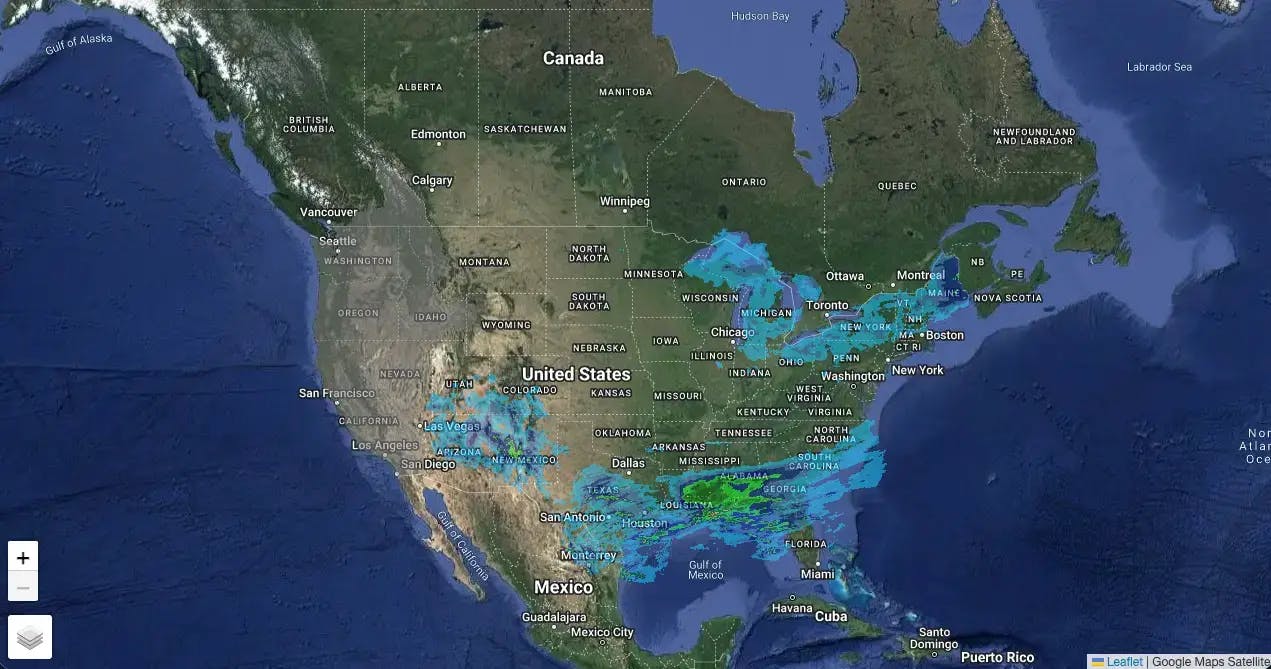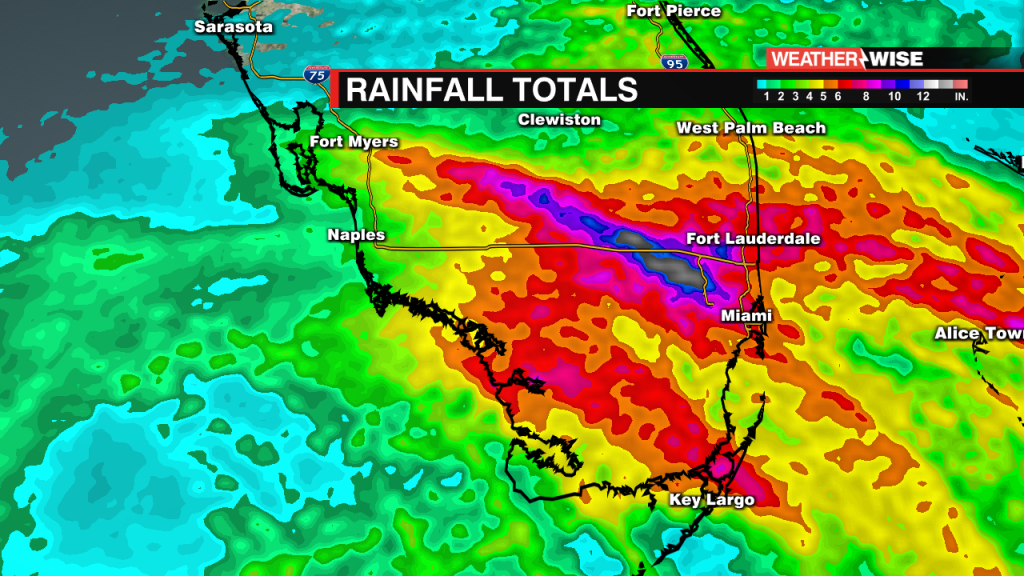Naples Florida rainfall totals are a crucial aspect of understanding the local weather and climate conditions. As one of the most picturesque destinations in Florida, Naples' weather plays a significant role in attracting tourists and residents alike. The rainfall patterns in this region not only impact agriculture but also influence outdoor activities and tourism. This article will delve deep into the rainfall data, seasonal trends, and historical patterns, providing valuable insights for anyone interested in Naples' climate.
Understanding Naples Florida rainfall totals is essential for both residents and visitors. The city experiences a tropical savanna climate, characterized by distinct wet and dry seasons. During the wet season, which typically runs from June to October, the region receives the majority of its annual precipitation. This article will explore the nuances of these weather patterns, offering data-driven insights to help you plan your trips or make informed decisions about living in Naples.
Whether you're planning a vacation or considering relocating to Naples, understanding the rainfall totals and climate trends is vital. This guide will provide comprehensive information about the average rainfall, monthly patterns, and how Naples compares to other regions in Florida. Let's dive into the details and uncover the secrets of Naples' unique weather.
Read also:Tippecanoe Inmate List A Comprehensive Guide To Understanding Jail Records
Table of Contents
- Biography of Naples' Climate
- Average Annual Rainfall in Naples
- Seasonal Rainfall Patterns
- Monthly Rainfall Totals
- Historical Rainfall Data
- Extreme Weather Events
- Comparison with Other Florida Cities
- Effects of Rainfall on Naples' Ecosystem
- Rainfall Forecasting Techniques
- Preparing for Rainy Seasons
Biography of Naples' Climate
Naples, Florida, boasts a climate that is both unique and diverse. Located on the southwestern coast of the state, Naples experiences a tropical savanna climate, which is classified as Aw under the Köppen climate classification system. This classification indicates a distinct wet season and a relatively dry season, making Naples' climate distinct from other regions in the United States.
The city's weather is heavily influenced by its proximity to the Gulf of Mexico, which moderates temperatures and contributes to the high humidity levels. During the summer months, the warm waters of the Gulf fuel thunderstorms and tropical storms, resulting in significant rainfall. In contrast, the winter months are generally dry, with occasional cold fronts bringing cooler temperatures.
Key Climate Features
- Distinct wet and dry seasons
- High humidity levels year-round
- Influence of the Gulf of Mexico on weather patterns
- Potential for tropical storms and hurricanes
Average Annual Rainfall in Naples
The average annual rainfall in Naples, Florida, typically ranges between 50 and 60 inches. This figure is higher than the national average, reflecting the region's tropical climate. The majority of this precipitation occurs during the wet season, which spans from June to October. Understanding these averages is crucial for planning outdoor activities, managing water resources, and preparing for potential flooding.
Data from the National Oceanic and Atmospheric Administration (NOAA) shows that Naples' rainfall totals have remained relatively consistent over the past few decades. However, climate change may influence these patterns in the future, potentially leading to more intense rainfall events.
Factors Influencing Annual Rainfall
- Proximity to the Gulf of Mexico
- Seasonal weather patterns
- Impact of El Niño and La Niña cycles
- Urbanization and land-use changes
Seasonal Rainfall Patterns
Naples' rainfall patterns are highly seasonal, with the majority of precipitation occurring during the wet season. This period, which typically begins in June and ends in October, is characterized by frequent afternoon thunderstorms and occasional tropical storms. During the dry season, which runs from November to May, rainfall is significantly lower, with some months receiving less than an inch of precipitation.
The transition between seasons is gradual, with May and November often serving as bridge months. During these months, the weather can be unpredictable, with sudden shifts between dry and wet conditions. Understanding these seasonal patterns is essential for both residents and visitors, as it helps in planning activities and preparing for potential weather-related challenges.
Read also:Comprehensive Guide To Funeral Services In De Soto Mo
Monthly Breakdown of Seasons
- Wet Season: June - October
- Dry Season: November - May
- Transition Months: May and November
Monthly Rainfall Totals
Breaking down Naples Florida rainfall totals by month provides a clearer picture of the region's precipitation patterns. The wettest months are typically July and August, when the city receives an average of 8 to 10 inches of rainfall. In contrast, the driest months are January and February, with less than an inch of precipitation on average.
Here is a summary of the average monthly rainfall totals in Naples:
- January: 1.2 inches
- February: 1.1 inches
- March: 2.0 inches
- April: 2.5 inches
- May: 4.0 inches
- June: 7.0 inches
- July: 9.5 inches
- August: 9.0 inches
- September: 7.5 inches
- October: 5.0 inches
- November: 2.0 inches
- December: 1.5 inches
Historical Rainfall Data
Historical rainfall data for Naples, Florida, reveals interesting trends and variations over the years. Records dating back to the early 20th century show that the region has experienced both droughts and periods of excessive rainfall. For example, the 1998 hurricane season brought record-breaking rainfall to Naples, while the early 2000s saw several years of below-average precipitation.
Climate scientists use historical data to identify long-term trends and predict future changes. By analyzing rainfall patterns over decades, researchers can better understand the impact of climate change on Naples' weather and make informed projections about future conditions.
Significant Historical Events
- 1998 Hurricane Georges: Brought record rainfall to Naples
- 2001 Drought: One of the driest years on record
- 2017 Hurricane Irma: Caused widespread flooding and damage
Extreme Weather Events
Naples, like much of Florida, is susceptible to extreme weather events, including hurricanes, tropical storms, and severe thunderstorms. These events can significantly impact rainfall totals, often resulting in short-term flooding and long-term changes to the local ecosystem. For example, Hurricane Irma in 2017 caused widespread flooding in Naples, with some areas receiving over 20 inches of rainfall in a single day.
Preparing for extreme weather events is crucial for both residents and local authorities. Emergency management plans, flood control measures, and public awareness campaigns are essential components of mitigating the impacts of severe weather.
Preparing for Extreme Weather
- Stay informed about weather forecasts
- Develop emergency preparedness plans
- Invest in flood insurance and protective measures
Comparison with Other Florida Cities
When comparing Naples Florida rainfall totals to other cities in Florida, it becomes evident that rainfall patterns vary significantly across the state. Cities such as Miami and Tampa also experience tropical savanna climates, with similar wet and dry seasons. However, the intensity and duration of rainfall can differ due to geographic and topographic factors.
For example, Miami tends to receive slightly more rainfall than Naples, averaging around 60 inches per year. In contrast, Tampa's annual rainfall is closer to 55 inches. These differences highlight the importance of understanding local weather patterns when planning for outdoor activities or managing water resources.
Comparison Table
| City | Average Annual Rainfall |
|---|---|
| Naples | 55 inches |
| Miami | 60 inches |
| Tampa | 55 inches |
Effects of Rainfall on Naples' Ecosystem
Naples' rainfall totals have a profound impact on the local ecosystem, influencing everything from plant growth to wildlife habitats. The wet season provides essential moisture for native vegetation, while the dry season encourages natural fire cycles that maintain healthy ecosystems. However, excessive rainfall can lead to flooding, which can disrupt habitats and harm aquatic life.
Conservation efforts in Naples focus on maintaining the balance between natural water cycles and human development. By protecting wetlands and promoting sustainable practices, local authorities aim to preserve the unique biodiversity of the region.
Key Conservation Initiatives
- Wetland preservation projects
- Sustainable water management practices
- Public education and outreach programs
Rainfall Forecasting Techniques
Accurate rainfall forecasting is essential for managing resources and preparing for potential weather-related challenges. Modern forecasting techniques rely on a combination of satellite data, radar systems, and computer models to predict rainfall patterns. In Naples, local meteorologists use advanced technology to provide residents with up-to-date information about impending storms and rainfall totals.
Understanding the limitations of forecasting is equally important. While technology has significantly improved the accuracy of predictions, unexpected weather events can still occur. Residents are encouraged to stay informed and prepared for any potential changes in weather conditions.
Forecasting Tools
- Satellite imagery
- Radar systems
- Computer modeling
Preparing for Rainy Seasons
Preparing for the rainy season in Naples involves a combination of personal and community efforts. Residents are encouraged to take proactive steps to protect their homes and property from potential flooding. Simple measures, such as clearing gutters and ensuring proper drainage, can make a significant difference in minimizing damage.
Local authorities also play a crucial role in preparing for the rainy season. Flood control infrastructure, such as levees and retention ponds, helps manage excess water and prevent widespread flooding. Public awareness campaigns educate residents about the importance of preparedness and provide resources for staying safe during severe weather events.
Tips for Residents
- Clear gutters and drains regularly
- Invest in flood insurance
- Stay informed about weather updates
Kesimpulan
Naples Florida rainfall totals play a vital role in shaping the region's climate and ecosystem. Understanding the average annual rainfall, seasonal patterns, and historical data is essential for both residents and visitors. By staying informed and prepared, individuals can make the most of Naples' unique weather while minimizing the risks associated with severe weather events.
We invite you to share your thoughts and experiences in the comments section below. Your feedback helps us improve and provides valuable insights for others. Additionally, feel free to explore our other articles for more information about Naples and its surroundings. Together, let's celebrate the beauty and diversity of this incredible region!


